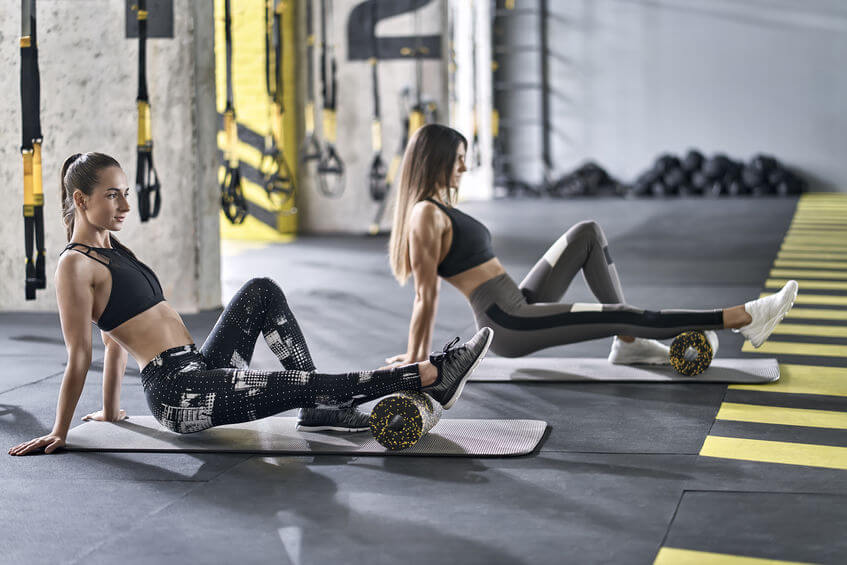
From being some mystery technique utilized by athletes, coaches and therapists, foam rolling, also known as self-myofascial release, has become a staple in commercial gyms. It has become a familiar practice for people at all fitness levels. So what exactly is a foam roller, what does it do? Read on to if you’re curious.
Self-Myofascial Release
By applying pressure to certain points on your body, you are helping in muscle recovery, and assisting them in returning to normal function (meaning muscles are elastic, healthy and ready to perform at moment’s notice). This is what self-myofascial release is about. It is essentially self-massage geared towards releasing muscle tightness or trigger points. Also, it allows the return of normal blood flow and restoration of healthy tissues. Foam rollers, lacrosse balls, Theracane, or even just your hands can be used for this.
Foam Rollers
They come in different shapes, sizes and textures, but foam rollers are usually long and cylindrical and made of dense foam. Here are some types of foam rollers:
- Smooth Rollers – best suited for people new to foam rollers, these are known for their smooth, dense foam surface. They have an even texture and are not as intense as textured variants.
- Textured Rollers – these guys are used to work deeper into muscles and work out knots and tensions. They have knobs and ridges on them.
- Foam-Covered Massage Sticks – used for leg and upper back massage.
- Foam Massage Balls – for targeted muscle areas.
Consider shape and size when choosing foam rollers. For instance, shorter variants are easier to carry if you travel a lot, and are more effective for smaller areas (like arms and such). It really will depend on how you plan to use it.
Foam Rolling Benefits
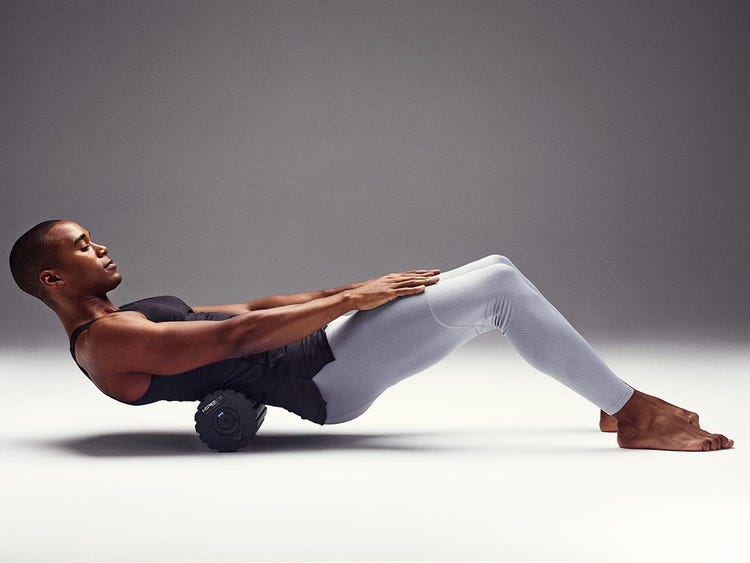
- Using foam rollers can reduce the risk of developing tissue adhesions, which are created as the result of collagen binding between layers of muscle. If a muscle is held in a specific position for a long time or overused during repetitive motions, collagen can form between layers of skeletal muscle, which then create adhesions that restrict the ability of muscle sheaths to slide against each other. The friction and pressure created by regular foam rolling can keep collagen from binding between layers of muscle tissue.
- Myofascial release can reduce tissue tension and muscle tightness to increase joint range of motion (ROM). Regular foam rolling for myofascial release can alleviate muscle tightness, helping to ensure optimal joint ROM and enhance overall movement performance.
- Foam rolling can help restore the proper length-tension relationship to muscles.
- Foam rolling help reduce soreness after an exercise session to promote the recovery process.
- The pressure from rolling can help increase your blood flow and elevate heat in the involved tissue.
- Myofascial release can help you feel relaxed after a workout.
How to Use a Foam Roller
- Locate sore/tight area of muscle
- Control your body as you slowly lower the targeted area such that it’s centered above the roller
- Lower body onto the foam until you reach a point of discomfort (not pain) and hold it there for 20-30 seconds
- Roll slowly back and forth to further stimulate the area
- Continue moving slowly along muscle with the roller, and stop and hold in areas needing more focus
Note that using foam rollers can be uncomfortable, so if you’re a beginner, it’s better to be too gentle rather than too intense to avoid risk of injury.
Foam Roller Exercises
Here are some exercises that target specific muscle groups, utilizing a cylindrical foam roller:
- Calf Exercise – sit on the ground, then extend one leg straight out in front of you and place the foam roller under that calf. Rest the other foot on the floor with knee bent. Prop yourself up with your arms extended behind you down to the floor. Lift butt off the floor slightly and begin rolling from ankle to just below the knee. Roll slowly, and upon reaching a tender spot, pause and hold roller for 20-30 seconds before moving on. You may rotate your leg in and out to work sides of your calf. Keep ankle flexed to engage calf muscle while rolling. Repeat on other leg.
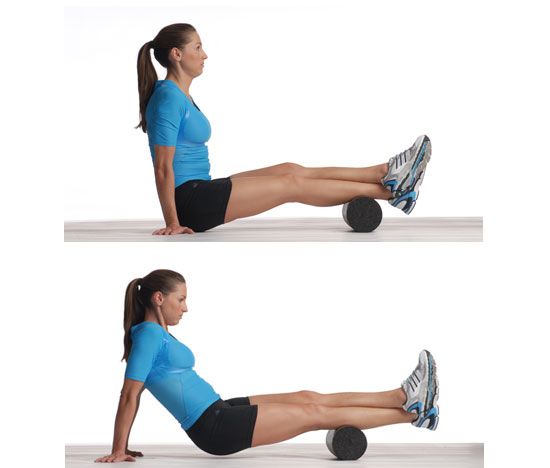
- Iliotibial (IT) Band Exercise – lie down on your side with roller underneath the side of the quad muscle. Place the foot of your other leg on the floor in front of the leg that’s on the roller. Support upper body with the forearm that’s closest to the ground and the hand of your other arm. Rollback and forth along outer thigh from above your knee to just below the boniest part of your hip, pausing as you go to hold the roller on specific spots for 20–30 seconds. You may lean your body slightly forward or back to adjust the angle of the pressure on your IT band.
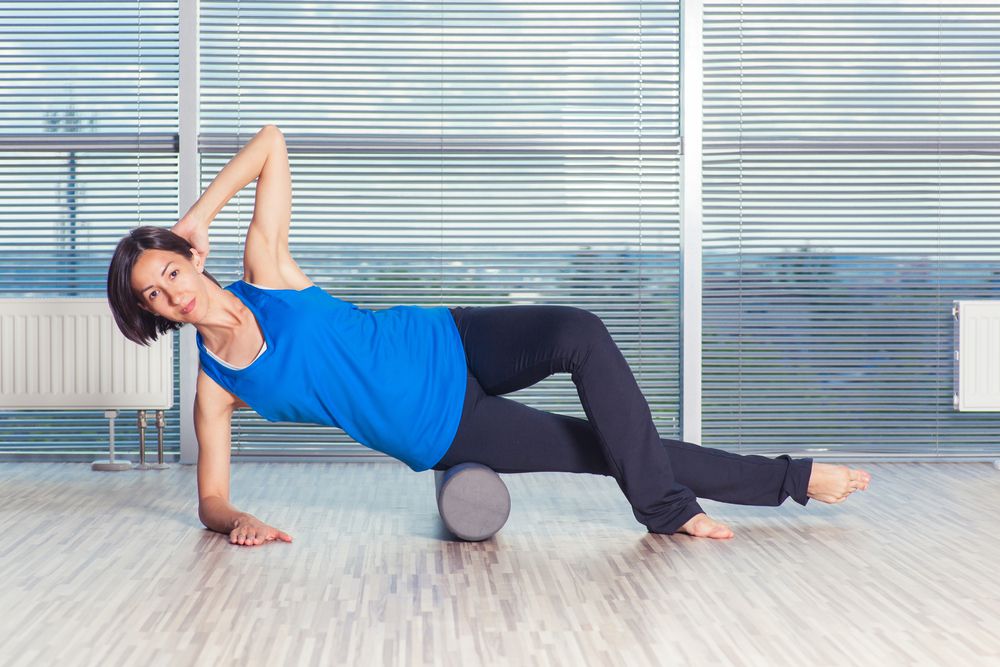
- Quadriceps Exercise – lie face down with roller placed under thighs. You may roll both quads at once or one at a time. Prop self up on your elbows and roll forward and back from above knee to hip.
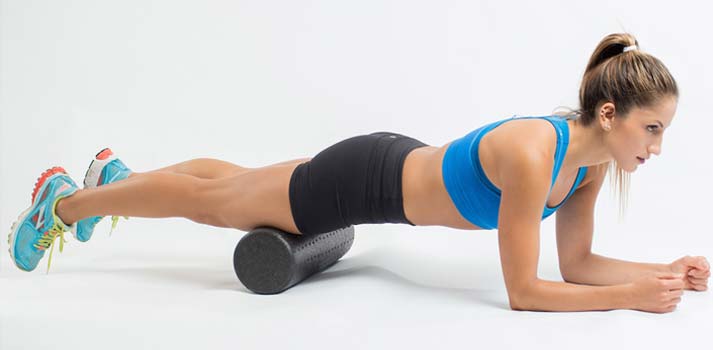
- Hamstring Exercise – sit with the roller placed under thighs and arms extended behind for support. Roll forward and back from above knee to below butt. You may roll both hamstrings at once or one at a time.
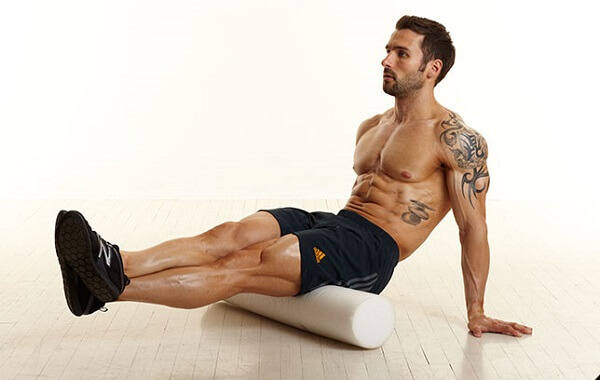
- Adductor Exercise – lie on stomach and extend one leg out to side with knee bent. Place foam roller near groin on the side of extended leg. Prop self up on elbows and roll your inner thigh, from groin to just above the knee.
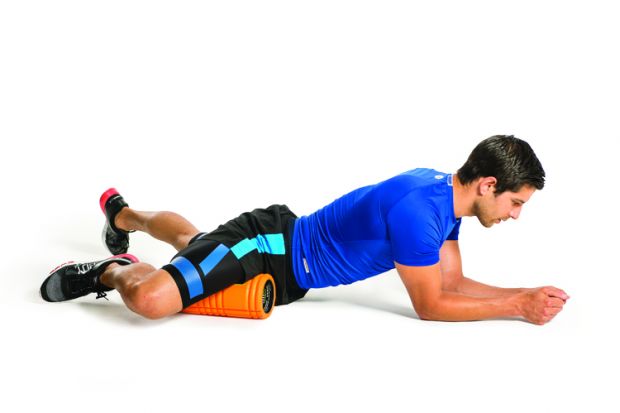
- Glutes Exercise – to roll right glute, sit on foam roller with knees bent and feet on the floor. Support the upper body with arms extended down to the ground behind you. Lift right foot up and place it on your left knee. The tilt toward the right and roll forward and back. Repeat on the left side.
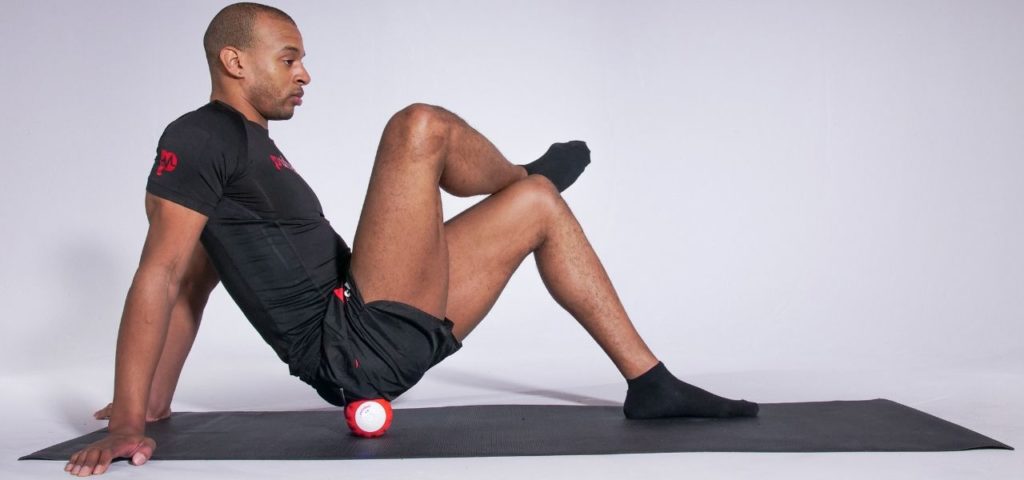
- Upper Back Exercise (a 24-36 inches long foam roller is recommended for this) – lie down on foam roller with it placed just below your shoulder blades in the middle of your back and perpendicular to your spine. Place hands behind neck to support your head but be careful not to pull down neck. Bring elbows in and toward chest to protract your shoulder blades. Bend your knees, lift butt off the ground and roll forward and back from mid-back to a few inches below the neck. Be careful around the neck and lower back, avoid these sensitive areas.
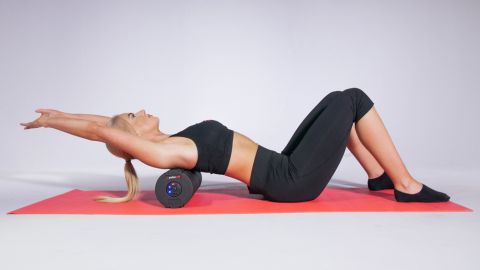
- Lats Exercise – lie down on one side with the foam roller underneath armpit and perpendicular to your body. Extend the lower arm in line with your body. You can either leave the upper arm and leg stacked on your body or use them as support. Rollback and forth from armpit down to mid-torso. Lean body forward or backward. To get deeper into the muscle. Repeat exercise on the other side.
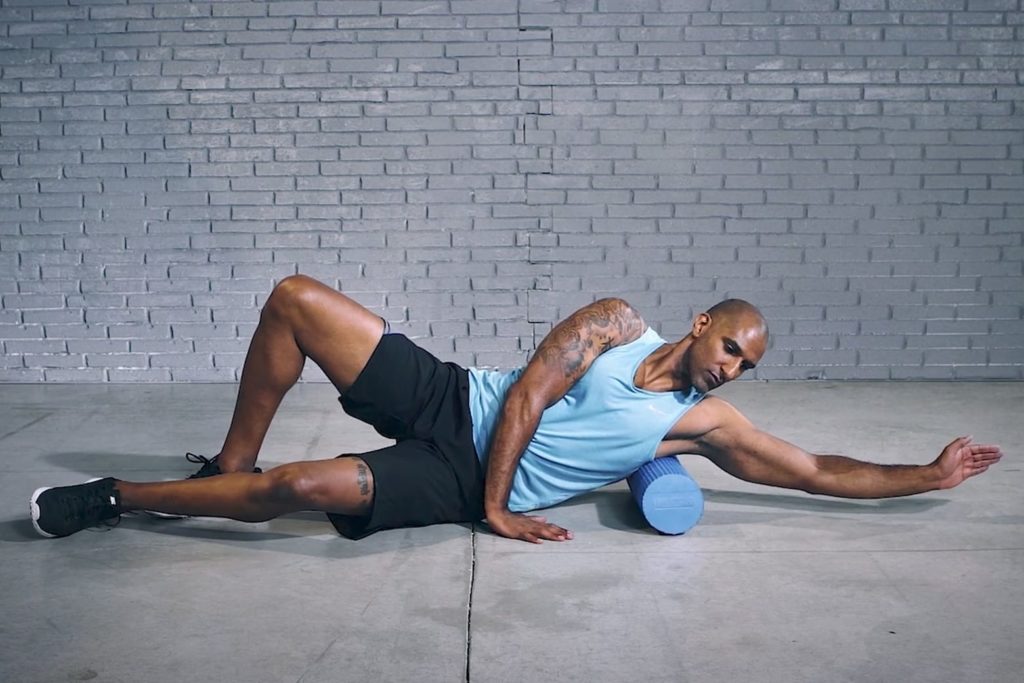
And that’s about it for foam rollers. And make sure to consult your physician or physical therapist for approval before using foam rollers. For more Health and Fitness tips. Click HERE!
Comments
0 comments

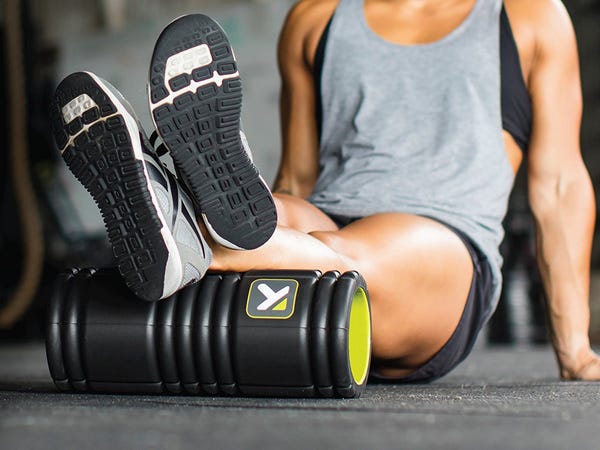
Thanks for sharing. I read many of your blog posts, cool, your blog is very good.
mexican drugstore online: online mexican pharmacy – mexican online pharmacies prescription drugs
mexican rx online
http://cmqpharma.com/# buying prescription drugs in mexico
mexican rx online
hey there and thank you for your information – I’ve definitely picked
up something new from right here. I did however expertise some
technical issues using this site, since I experienced
to reload the web site many times previous to I could get it to load correctly.
I had been wondering if your web host is OK? Not that I’m complaining, but sluggish loading instances times will very frequently affect your placement in google and could damage your quality score
if advertising and marketing with Adwords. Anyway I am adding this RSS to
my e-mail and could look out for much more of your respective intriguing content.
Ensure that you update this again very soon..
Lista escape room
I like this web site it’s a master piece! Glad I
detected this on google.!
onlinecanadianpharmacy pharmacy canadian superstore canada online pharmacy
https://canadapharmast.com/# canadian king pharmacy
indian pharmacies safe india online pharmacy best india pharmacy
https://foruspharma.com/# mexican mail order pharmacies
medicine in mexico pharmacies buying prescription drugs in mexico online reputable mexican pharmacies online
https://canadapharmast.online/# pharmacy canadian
mexican pharmaceuticals online mexico pharmacy mexico drug stores pharmacies
Oh my goodness! Impressive article dude! Thanks, However I am encountering difficulties with your RSS. I don’t understand why I am unable to subscribe to it. Is there anyone else having similar RSS issues? Anyone who knows the answer will you kindly respond? Thanks!!
I want to to thank you for this excellent read!! I definitely enjoyed every little bit of it. I have you saved as a favorite to check out new stuff you post…
buy clomid: where can i get clomid without rx – buy generic clomid
Hello there! This article couldn’t be written much better! Looking at this article reminds me of my previous roommate! He continually kept preaching about this. I will send this article to him. Pretty sure he will have a great read. Thanks for sharing!
I was very pleased to discover this website. I want to to thank you for ones time due to this fantastic read!! I definitely appreciated every part of it and I have you saved as a favorite to look at new stuff in your web site.
paxlovid covid: paxlovid for sale – paxlovid pill
Hello there! This article could not be written much better! Looking through this article reminds me of my previous roommate! He continually kept talking about this. I am going to forward this information to him. Pretty sure he’ll have a good read. I appreciate you for sharing!
paxlovid for sale: paxlovid price – buy paxlovid online
You need to take part in a contest for one of the greatest sites on the net. I am going to highly recommend this website!
This is the right web site for anyone who wishes to understand this topic. You realize so much its almost tough to argue with you (not that I actually will need to…HaHa). You certainly put a fresh spin on a subject that’s been discussed for years. Wonderful stuff, just wonderful.
clomid without dr prescription: where can i buy cheap clomid without prescription – cost clomid without insurance
Good write-up. I certainly love this site. Continue the good work!
Wonderful article! We will be linking to this great content on our website. Keep up the great writing.
doxycycline 100g tablets: where can i get doxycycline pills – buy online doxycycline
Aw, this was a very nice post. Spending some time and actual effort to generate a great article… but what can I say… I put things off a whole lot and never seem to get anything done.
order doxycycline 100mg without prescription: where can i get doxycycline – where can i buy doxycycline
You should be a part of a contest for one of the most useful sites on the web. I most certainly will recommend this website!
Paxlovid buy online: buy paxlovid online – Paxlovid over the counter
This is a topic that’s near to my heart… Thank you! Exactly where can I find the contact details for questions?
It’s nearly impossible to find knowledgeable people for this subject, but you sound like you know what you’re talking about! Thanks
When I initially commented I seem to have clicked the -Notify me when new comments are added- checkbox and now every time a comment is added I get four emails with the same comment. Is there a way you can remove me from that service? Thanks.
This is the perfect website for anybody who would like to understand this topic. You know so much its almost tough to argue with you (not that I actually will need to…HaHa). You certainly put a new spin on a subject that has been discussed for years. Excellent stuff, just great.